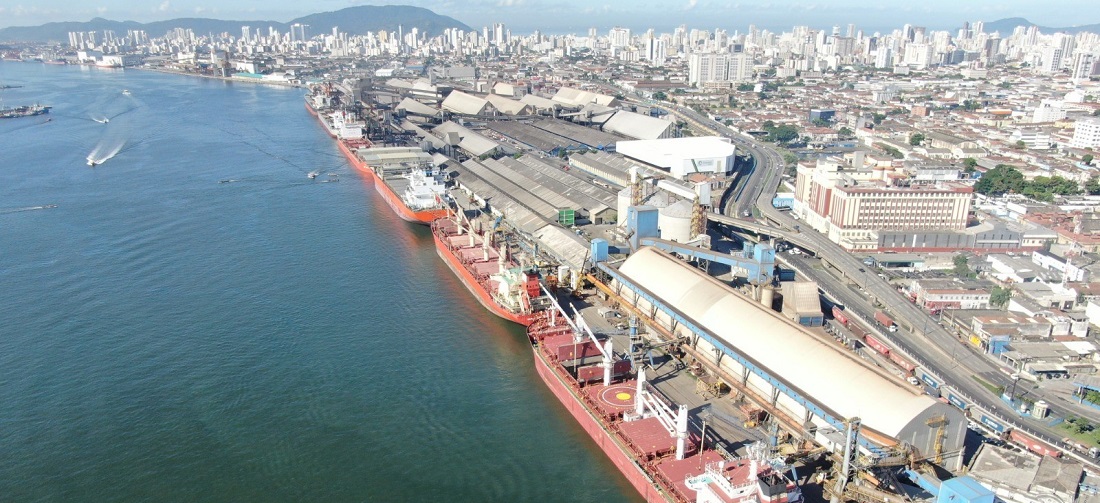
Measures minimize noise pollution in Port of Santos
Oct, 10, 2023 Posted by Gabriel MalheirosWeek 202339
Amidst the bustling cargo operations that make the Port of Santos the most important in Brazil and the largest in the Southern Hemisphere, the honking of trucks and the train whistles are part of daily life. Hence, preventive measures are consistently taken to ensure a harmonious relationship between the port and the surrounding cities. These efforts involve comprehensive monitoring activities with the participation of the Environmental Company of the State of São Paulo (Cetesb), the Port Authority of Santos (APS), and companies within the port complex.
According to Cetesb, few complaints are received and addressed regarding this issue, demonstrating the efficiency of the current management system. The state agency informed reporters that monitoring of noise pollution and sound emissions in the port environment is conducted during the environmental licensing process of each terminal. This is the phase where such controls are typically defined, which can involve either single measurements or longer-term assessments.
Most companies in the port, as per the APS, have had their noise levels measured at least once during their operations.
In addition to these factors, there are also noises generated by truck traffic on public roads and train traffic, which fall under the responsibility of APS. The company has a contract with an environmental engineering firm to monitor noise levels.
Measurements are taken at 23 different points around the perimeter during morning, afternoon, and evening periods. These levels are compared to the standards set in NBR 10.152, as per the Conama Resolution 01/90. Quarterly campaigns are also conducted, as stated by the Port Authority.
Trucks and Terminals
In the Port of Santos, APS recalls that the primary source of noise affecting the population is road traffic, the most widely used mode of cargo transport throughout the country. Significant changes have been made to ensure vehicles move smoothly towards the economic progress brought by the port complex.
Improving the road surfaces is one of these changes. The renovation of the pavement in front of the Customs House, replacing cobblestones with asphalt, has been instrumental in reducing noise levels generated by this type of source.
The continuous modernization of port terminals also significantly contributes to noise pollution control. The replacement of old equipment with newer ones has essential effects on noise levels, creating a more pleasant port landscape for everyone’s eyes and ears.
Source: A Tribuna
To read the original news report, click on: https://www.atribuna.com.br/noticias/portomar/medidas-minimizam-poluicao-sonora-no-porto-de-santos-durante-movimentacao-de-cargas
-
Other Cargo
Jun, 29, 2022
0
Brazil fertilizer imports to slow down in the second half of the year
-
DW 2019 EN
Jan, 30, 2019
0
DatamarWeek 31 January 2019
-
Ports and Terminals
Mar, 27, 2023
0
Norwegian support vessel arrives at Brazil’s Port of Paranagua
-
Ports and Terminals
Jan, 19, 2023
0
Port of Rio Grande dredging removes over 2 mln cubic metres of sediments


